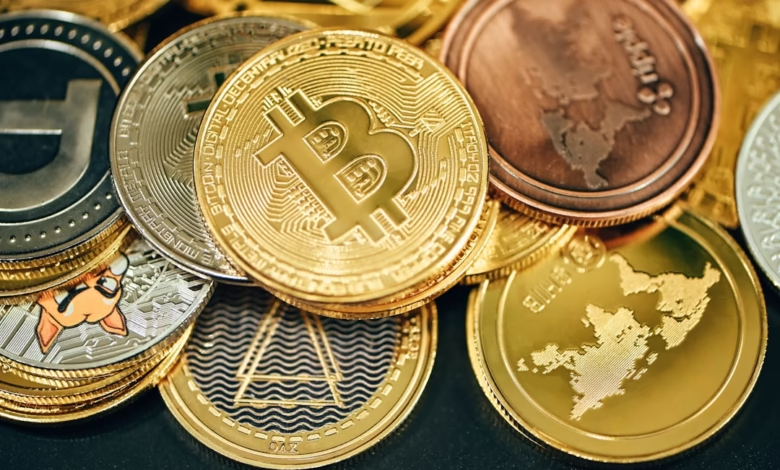Digital Currencies and Inflation: How Cryptocurrency Can Serve as a Hedge Against Rising Costs and Economic Uncertainty

In recent years, the global economy has faced unprecedented challenges, prompting a renewed interest in inflation and its multifaceted impacts on financial stability. Understanding inflation—its causes, types, and effects on economic growth—is crucial for navigating today’s volatile market landscape. With rising costs of living influenced by factors such as wage inflation, supply chain disruptions, and soaring energy and food prices, individuals and investors alike are seeking inflation-proof investments to safeguard their financial futures. Amidst these concerns, digital currencies have emerged as a potential hedge against inflation, prompting discussions about their role in protecting assets from currency devaluation and fluctuating interest rates.
This article delves into the complexities of inflation, including hyperinflation, stagflation, and disinflation, while exploring how digital currencies can serve as a strategic response to inflation trends. We will analyze current market dynamics and offer comparisons between cryptocurrencies and traditional investments, shedding light on their effectiveness in preserving retirement savings and combating rising inflation expectations. As central banks continue to navigate monetary and fiscal policies in an effort to maintain economic growth, understanding the intersection of digital currencies and inflation is more relevant than ever. Join us as we explore the potential of digital currencies in the context of inflation hedging and the future of investment strategies.
- 1. Understanding Inflation: Causes, Types, and Its Impact on Economic Growth
- 2. How Digital Currencies Act as a Hedge Against Inflation: Analyzing Current Trends
- 3. Inflation-Proof Investments: Comparing Cryptocurrency with Traditional Assets in a Volatile Economy
1. Understanding Inflation: Causes, Types, and Its Impact on Economic Growth
Inflation is a complex economic phenomenon that refers to the general increase in prices and the subsequent decline in purchasing power over time. Understanding inflation involves examining its causes, types, and impact on economic growth.
The causes of inflation can be broadly categorized into demand-pull and cost-push factors. Demand-pull inflation occurs when the demand for goods and services exceeds their supply, often driven by increased consumer spending, fiscal policy, or rapid economic growth. Cost-push inflation, on the other hand, arises when the costs of production increase, leading to higher prices for consumers. This can be a result of supply chain disruptions, rising energy prices, or increases in food prices.
There are several types of inflation that economists monitor closely. Hyperinflation represents an extreme form, often exceeding 50% inflation per month, which can devastate an economy and erode savings. Stagflation combines stagnant economic growth with high inflation and unemployment, presenting a challenging scenario for policymakers. Disinflation, conversely, refers to a decrease in the rate of inflation, signaling a slowing economic environment.
Inflation has significant implications for economic growth. While moderate inflation can stimulate spending and investment, excessive inflation can lead to uncertainty, reduced consumer confidence, and higher interest rates. Central banks often respond to inflationary pressures by adjusting monetary policy, aiming to stabilize prices and maintain economic growth. Inflation metrics such as the Consumer Price Index (CPI) and Producer Price Index (PPI) are crucial for tracking these trends and guiding policy decisions.
As inflation expectations rise, individuals and businesses may seek inflation-proof investments to protect their financial well-being. This includes real estate inflation strategies, where property can serve as a hedge against rising costs. Additionally, digital currencies have emerged as a potential tool for inflation hedging, drawing interest from those concerned about currency devaluation and the erosion of retirement savings.
In summary, understanding inflation—its causes, types, and impact on economic growth—is essential for navigating the complexities of today's economic landscape. By keeping an eye on global inflation trends and employing effective inflation strategies, individuals and policymakers can better prepare for the challenges posed by this persistent economic issue.
2. How Digital Currencies Act as a Hedge Against Inflation: Analyzing Current Trends
As global inflation trends continue to impact economies, many investors are turning to digital currencies as a potential hedge against inflation. Inflation, driven by factors such as supply chain disruptions, rising energy and food prices, and wage inflation, has heightened concerns about the erosion of purchasing power. Historical inflation metrics like the Consumer Price Index (CPI) and Producer Price Index (PPI) reflect increasing costs of living, prompting a search for inflation-proof investments.
Digital currencies, particularly cryptocurrencies like Bitcoin and Ethereum, are often viewed as viable alternatives to traditional fiat currencies. Unlike fiat money, which can be devalued through excessive printing and loose monetary policy by central banks, cryptocurrencies typically have capped supply limits. This scarcity can help protect against currency devaluation, making them attractive during periods of hyperinflation or stagflation.
Moreover, the decentralized nature of digital currencies offers a level of independence from government fiscal policies. While central banks may implement inflation strategies to manage economic growth and control interest rates, cryptocurrencies operate outside of these traditional frameworks. This independence allows them to maintain value even when traditional markets are volatile.
Recent trends show that as inflation expectations rise, more investors are allocating a portion of their retirement savings into digital currencies to diversify against inflation and debt burdens. The appeal of digital currencies is further bolstered by their potential for high returns in uncertain economic climates, making them a popular choice among those seeking to safeguard their wealth.
In summary, as inflationary pressures persist, digital currencies present a compelling option for investors looking to hedge against the impacts of inflation, driven by their unique characteristics and the current economic landscape shaped by central banks and fiscal policies.
3. Inflation-Proof Investments: Comparing Cryptocurrency with Traditional Assets in a Volatile Economy
In today’s volatile economy, understanding inflation and its various types—such as hyperinflation, stagflation, and disinflation—is crucial for investors seeking inflation-proof investments. Traditional assets like real estate, stocks, and bonds have been the go-to options for many, but the rise of digital currencies presents a new avenue for hedging against inflation.
Inflation can stem from numerous causes, including supply chain disruptions, rising energy prices, and wage inflation. These factors affect consumer purchasing power, leading to increased costs of living and necessitating effective inflation strategies for preserving wealth. Traditional assets have historically served as a buffer during periods of inflation; for instance, real estate inflation tends to rise alongside the Consumer Price Index (CPI) and Producer Price Index (PPI), ensuring that property values keep pace with inflation metrics.
However, cryptocurrencies like Bitcoin and Ethereum have emerged as potential alternatives. Unlike traditional investments, digital currencies are not directly influenced by monetary policy or fiscal policy decisions made by central banks. For instance, when currency devaluation occurs due to expansive monetary policies, cryptocurrencies can provide an escape route for investors looking to safeguard their retirement savings against inflation and debt.
Moreover, global inflation trends are driving some investors towards digital currencies as a reliable hedge. While traditional assets may face volatility due to fluctuating interest rates and economic growth forecasts, cryptocurrencies offer a decentralized form of value storage that is less susceptible to manipulation by central authorities. This quality becomes particularly appealing during periods when inflation expectations skyrocket.
Adopting cryptocurrencies as part of an investment strategy can enhance diversification and reduce risk associated with traditional assets. While the potential for extreme volatility exists, the long-term outlook for digital currencies suggests they are increasingly becoming a staple in discussions around inflation hedging. Investors must weigh the unique risks and rewards of these assets against traditional investments, especially in an era marked by rising inflation expectations and economic uncertainty. As inflation continues to shape financial landscapes, understanding the interplay between digital currencies and traditional assets will be essential for making informed investment decisions.
In conclusion, as we navigate the complexities of inflation and its various causes, understanding the role of digital currencies as a hedge becomes increasingly vital. The economic landscape is fraught with challenges such as wage inflation, currency devaluation, and the potential for hyperinflation or stagflation, making it essential for investors to explore inflation-proof investments. Cryptocurrencies have emerged as a compelling alternative to traditional assets, providing a unique opportunity for those looking to protect their retirement savings and combat rising costs of living.
Current global inflation trends highlight the impact of monetary policy, fiscal policy, and supply chain disruptions on everyday expenses, including energy and food prices. As central banks adjust interest rates and inflation expectations fluctuate, investors must stay informed about inflation metrics like the Consumer Price Index (CPI) and Producer Price Index (PPI). By analyzing the strengths of digital currencies, we can see their potential as a viable inflation hedging strategy in a volatile economy.
Ultimately, as we look to the future, it is clear that the intersection of digital currencies and inflation could redefine economic growth and investment strategies. By diversifying portfolios with cryptocurrencies, investors may find a safeguard against inflationary pressures, ensuring greater financial security in the years to come. Embracing this innovative approach could very well be the key to thriving amidst the ongoing challenges posed by inflation.
References:
– [Insert relevant sources and citations here]





